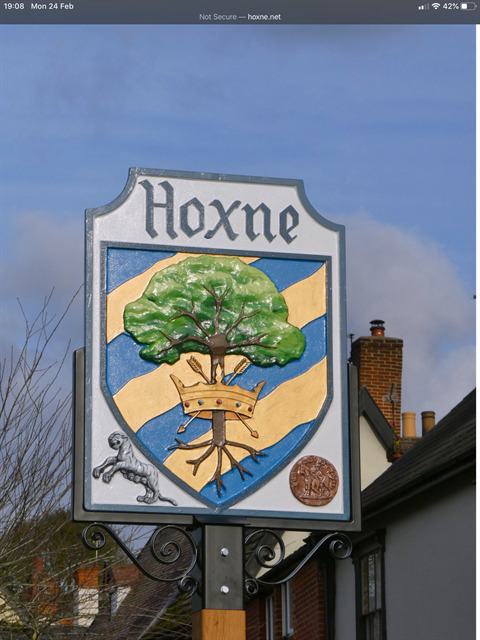
The past is ever-present in the small village of Hoxne in north Suffolk. The village will forever be associated with the legend of St Edmund, King and Martyr, who is thought to have been killed here by the Danes in 855 AD. At least one chapel to Edmund was built here, and a later Bishop's Palace. It is possible that Hoxne was the centre of an early Bishop's see, and we know that the Bishops of Norwich had a palace here. A priory of monks associated with Norwich Cathedral was established at Hoxne at least as early as the mid-11th century. THE VICARAGE MOAT Beside the medieval parish church of St Peter and St Paul is a 15th-century vicarage, surrounded by a wide moat enclosing an area of some 1.3 acres. Though this is by no means the only moated vicarage in Suffolk, it is easily one of the largest, indicating that the site was one of particular importance. The Bishops of East Anglia had an official residence at Hoxne as early as the 10th century. There was also a small priory, a daughter house of Norwich Cathedral. The moat surrounding the vicarage may indicate that the bishop's palace stood where the vicarage now stands, or perhaps the site was used by the cell of monks. In either case, the moat probably predates the existing 15th century complex of buildings by several centuries. The Bishops of Norwich had a residence at Hoxne for at least 450 years. Coats of arms of several 15th-century bishops can be found in the stained glass windows within the church. Bishops whose arms appear include John Wakering (bishop from 1415-1425), a noted persecutor of Lollards. An information plaque within the church notes that Wakering was known for his strict views, including a proclamation that forbade barbers from shaving on Sundays except during Harvest time. There is also a coat of arms to Bishop Walter Lyhert (1446-1472), who built the marvellous nave roof at Norwich Cathedral, and Bishop James Goldwell (1472-1499), who acted as Secretary of State to Edward IV. As for the church, it is known for its collection of vivid medieval wall paintings, and a much worn 14th-century parish chest protected by seven locks. The exact site of Edmund's martyrdom is unknown, but it may have been on a slope overlooking the Goldbrook. Near Cross Street, a cross marks the site of an ancient oak which fell down in 1848. Within the oak was a metal tip, thought to be an arrow point. Tree-ring evidence suggested that it was buried in the tree some 1000 years previously. Its a stretch, but the tree may have been the very oak where Edmund was killed by the Danes. At least it makes a good story to think so! THE HOXNE HOARD On 16 November 1992, a man named Eric Lawes was exploring a farm field at Hoxne, in search of a hammer lost by the farmer. Lawes was a metal detecting enthusiast, but what his detector turned up that day was not a hammer, but the largest hoard of 4th-century Roman silver and gold ever found in Britain. The 'Hoxne Hoard' contained over 15,000 Roman coins, and more than 200 silver and gold objects. The hoard was in exceptional condition, and even included bits of fabric and decorative bone. Aside from the coins, there were spoons, ladles, gold bracelets, a silver tigress handle for a vase, a rare pepper pot, toothpicks, and a gold body chain. The Hoxne Horde is now held at the British Museum (you can watch an online tour of the horde). Hoxne is a wonderful, peaceful village, in a landscape of rural Anglian splendour. It might be easy to think of the St Edmund connection as a bit of wishful thinking, and yet, having visited, there's just something about the place that seems, well, for want of a better word, just a bit magical, and well worth experiencing for yourself.
If anybody would like to expand the Village Sign Series, please do. I would ask that you request a number for your cache first by filling in the new request form on the Village Sign Series website villagesignseries.co.uk https://www.villagesignseries.co.uk so we can keep track of the Village Sign numbers and names to avoid duplication.